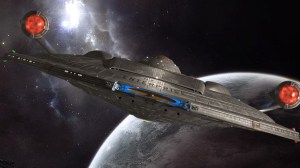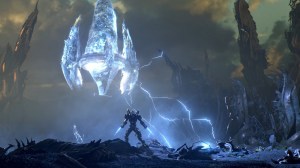With period, folk horror, there is always the risk of a story being near alien for cell-phone savvy audiences, but scary is scary and it doesn’t matter if your characters know what texting or paved roads are, and The Last Thing Mary Saw is scary. Like The Witch before it, writer/director Edoardo Vitaletti’s new film feels steeped in a specific time and oozes atmosphere at every turn. Comparisons to the two will be easy to make, though the former was more committed to period-accurate authenticity and they would make a solid pairing, but there’s more going on here than just what it has in common with another popular horror flick.
Videos by ComicBook.com
Set against the backdrop of a family farmhouse in the 1840s, The Last Thing Mary Saw focuses on the title character (Stefanie Scott of Insidious: Chapter 3) and Eleanor (Isabelle Fuhrman of Orphan), her secret lover. Their proclivities are not taken to kindly, given the time and place, but after the family matriarch passes away mysteriously (Judith Roberts of Dead Silence), they’re forced under the microscope of era-appropriate religious persecution, all while other sinister powers make themselves known.
The film’s cast also features other standouts with Rory Culkin (Scream 4, Lords of Chaos) delivering a tremendous performance in a brief scene, forever altering the course of the movie itself. Though Scott and Fuhrman’s work is the relationship that brings it all together, Roberts is the hidden gem of the entire piece. The 86-year-old actress channels the same energy and horror that she brought to James Wan’s puppet-themed ghost story where she played Mary Shaw. Her dialogue drips out like acid in this film, landing with a simmer and leaving a hole in whatever it touches; she’s simply tremendous.
Structurally, there is something to be said for Vitaletti’s work in the film, as flipping between the present and flashbacks can be a confusing device for a storyteller, but he mostly makes it work here. Reveals throughout the narrative are spaced out with just the right length, allowing the intrigue and mood of the entire piece to envelope you just before dropping another nugget of info about what’s going on.
Another surprising choice, done with tremendous effect by Vitaletti and his cast, is that large sections of the film are performed in total silence. When the actors aren’t able to speak, with good narrative reason, it forces their performances to become more primal and expressive. Not only that, but the sound design gets to take the front seat for a while as every creak in the wooden floors, every clank of silverware on dishes, and every wrap on an outside window communicates something to the viewer. Other moments of quiet also allow for the silence to tell the story as the audience waits to see what could even come next, with the film’s final sound effect perhaps being its most effective.
There’s also something to be said about the look of the film itself, as cinematographer David Kruta brings a Barry Lyndon-like aesthetic where only the natural or period-appropriate lights illuminate the scenery. Torches, candles, and the sun are the only thing giving light to this world and with it, they create shadows that elevate the lore of the film itself, but also the hairs on the back of your neck.
If The Last Thing Mary Saw was being touted across the country like its A24 cousin, it would already be on the radars of the masses, but that it can exist underneath that and may arrive as a surprise to audiences will only lend to its powerful and tenseful build-up.
Rating: 3.5 out of 5
The Last Thing Mary Saw made its world premiere at Fantasia International Film Festival; Shudder has acquired the rights to it in the US.








